
Michael E. Mann
Graphics
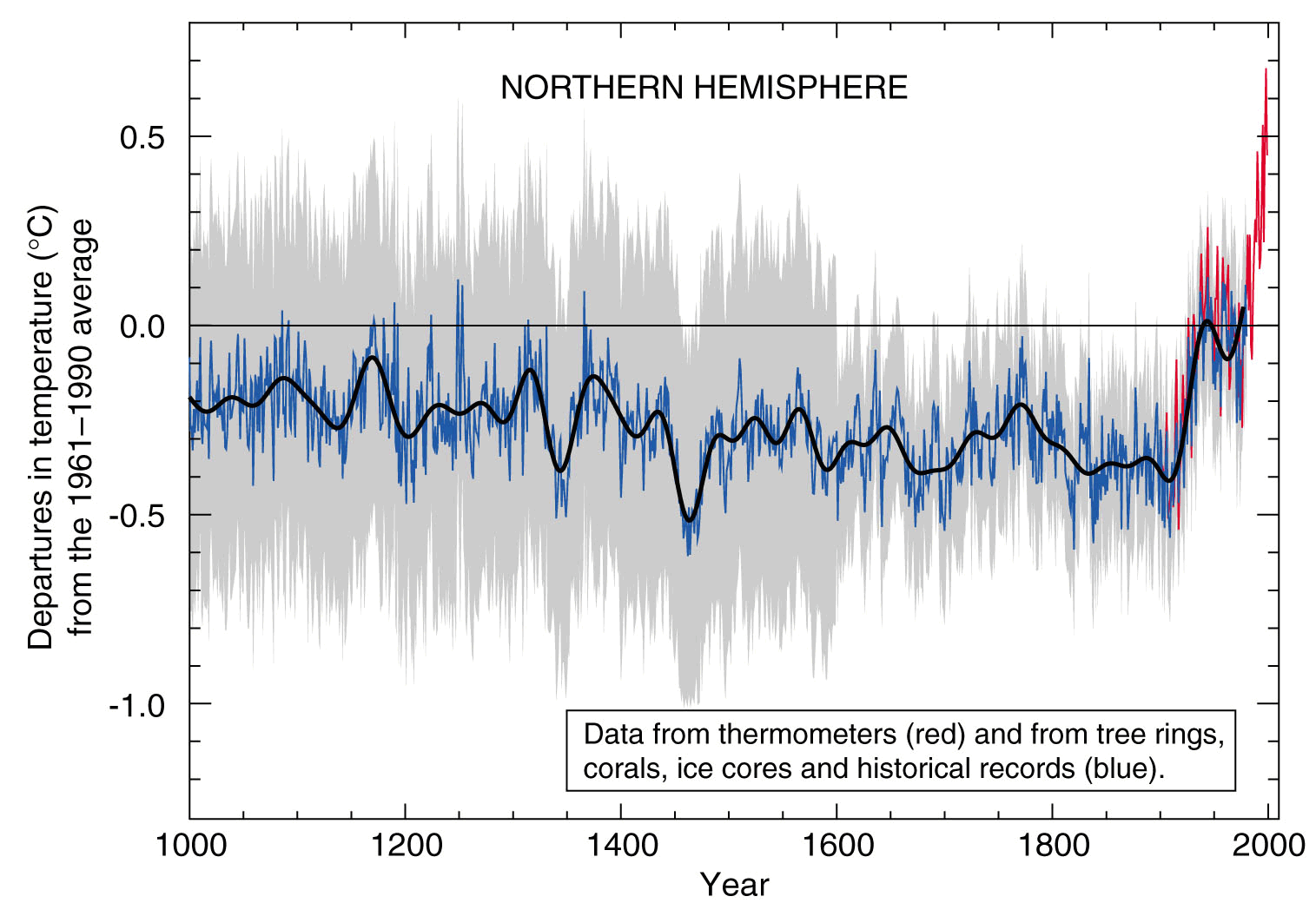 |
IPCC 2001 3rd Assessment Report SPMTime reconstructions [blue] and instrumental data [red] for Northern Hemisphere mean temperature (NH). In both cases, the zero line corresponds to the 1902-80 calibration mean of the quantity. Raw data are shown up to 1995 and positive and negative 2-sigma uncertainty limits are shown by the grey shaded region. The thick black line corresponds to a lowpass filtered version of the reconstruction. |
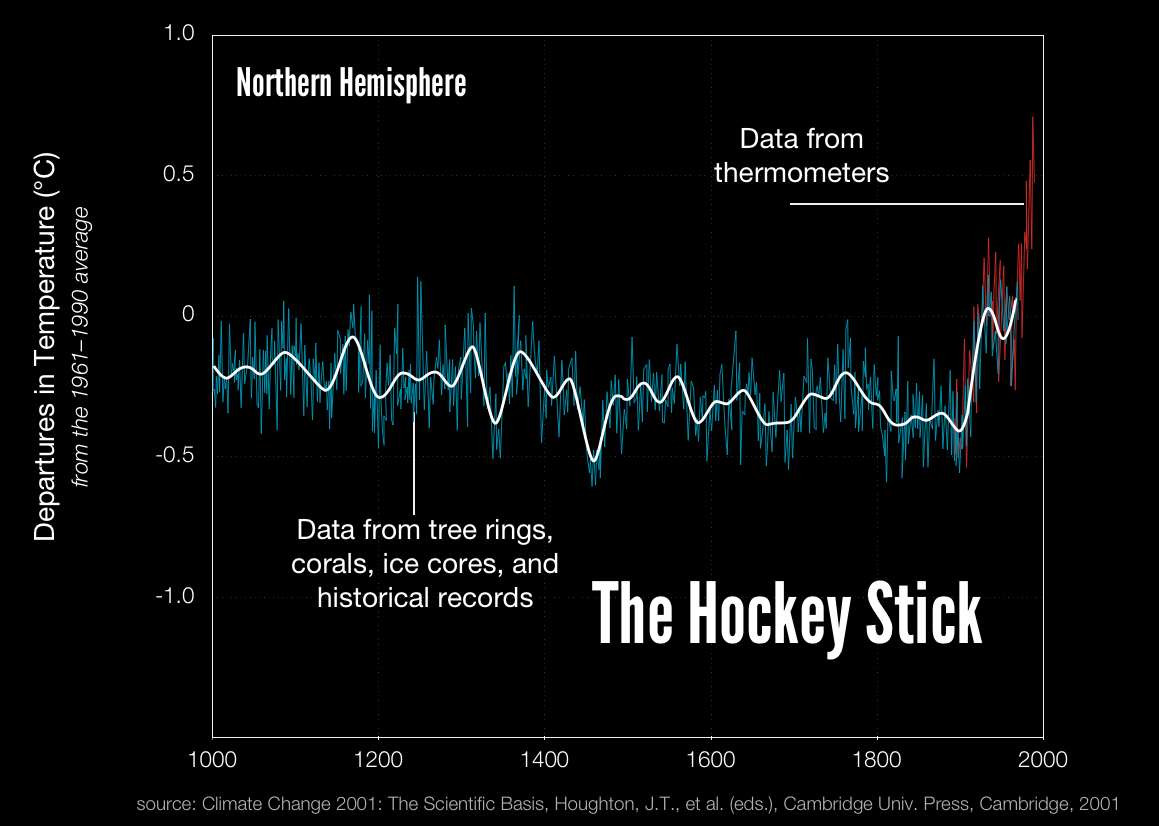 |
Hockey Stick AlternativeTime reconstructions [blue] and instrumental data [red] for Northern Hemisphere mean temperature (NH). In both cases, the zero line corresponds to the 1902-80 calibration mean of the quantity. Raw data are shown up to 1995. The thick black line corresponds to a lowpass filtered version of the reconstruction. |
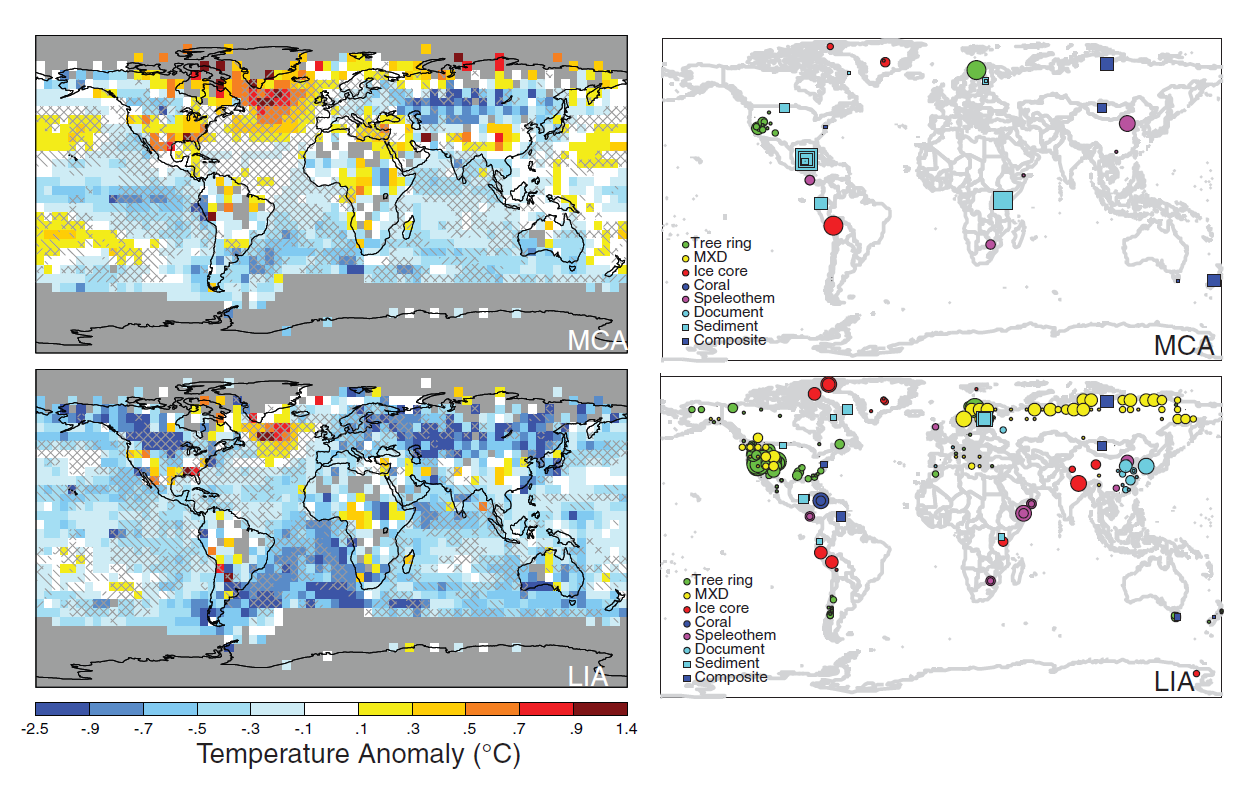 |
Reconstructed surface temperature pattern for MCA & LIAReconstructed surface temperature pattern for MCA (950 to 1250 C.E.) and LIA (1400 to 1700 C.E.). Shown are the mean surface temperature anomaly (left) and associated relative weightings of various proxy records used (indicated by size of symbols) for the low-frequency component of the reconstruction (right). Anomalies are defined relative to the 1961 1990 reference period mean. Statistical skill is indicated by hatching [regions that pass validation tests at the P = 0.05 level with respect to RE (CE) are denoted by / (\) hatching]. Gray mask indicates regions for which inadequate long-termmodern observational surface temperature data are available for the purposes of calibration and validation. |
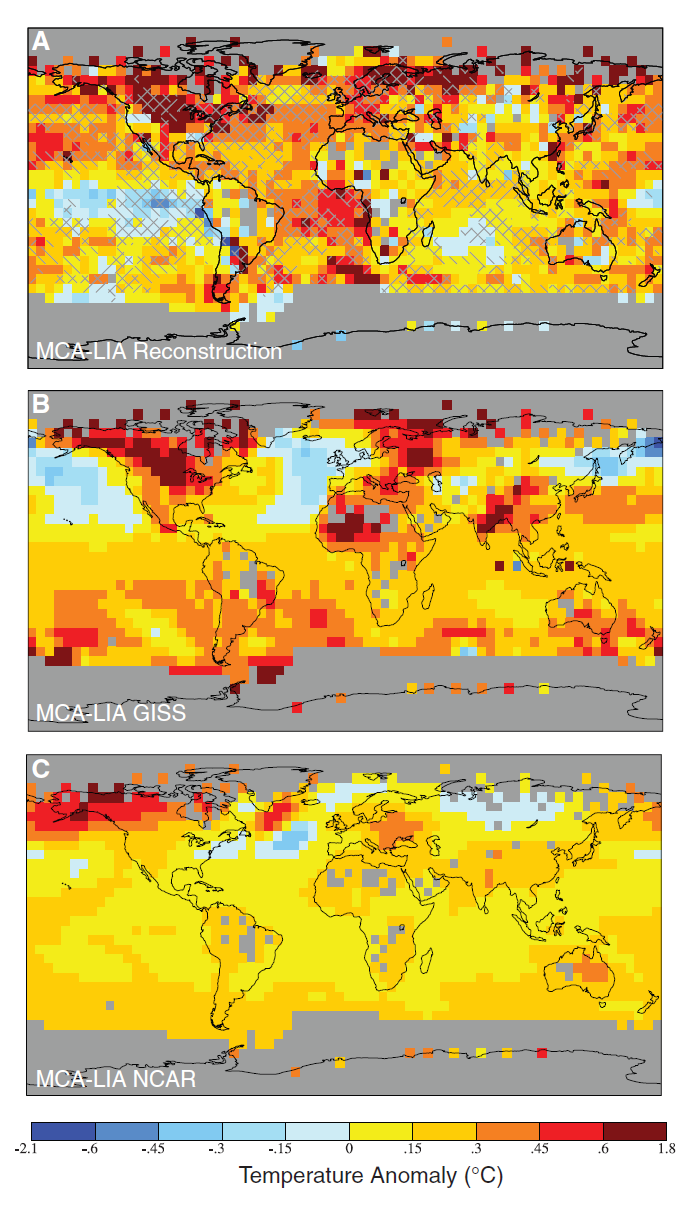 |
Spatial pattern of MCA-LIA surface temperature differenceSpatial pattern of MCA-LIA surface temperature difference in reconstructions and model simulations. |
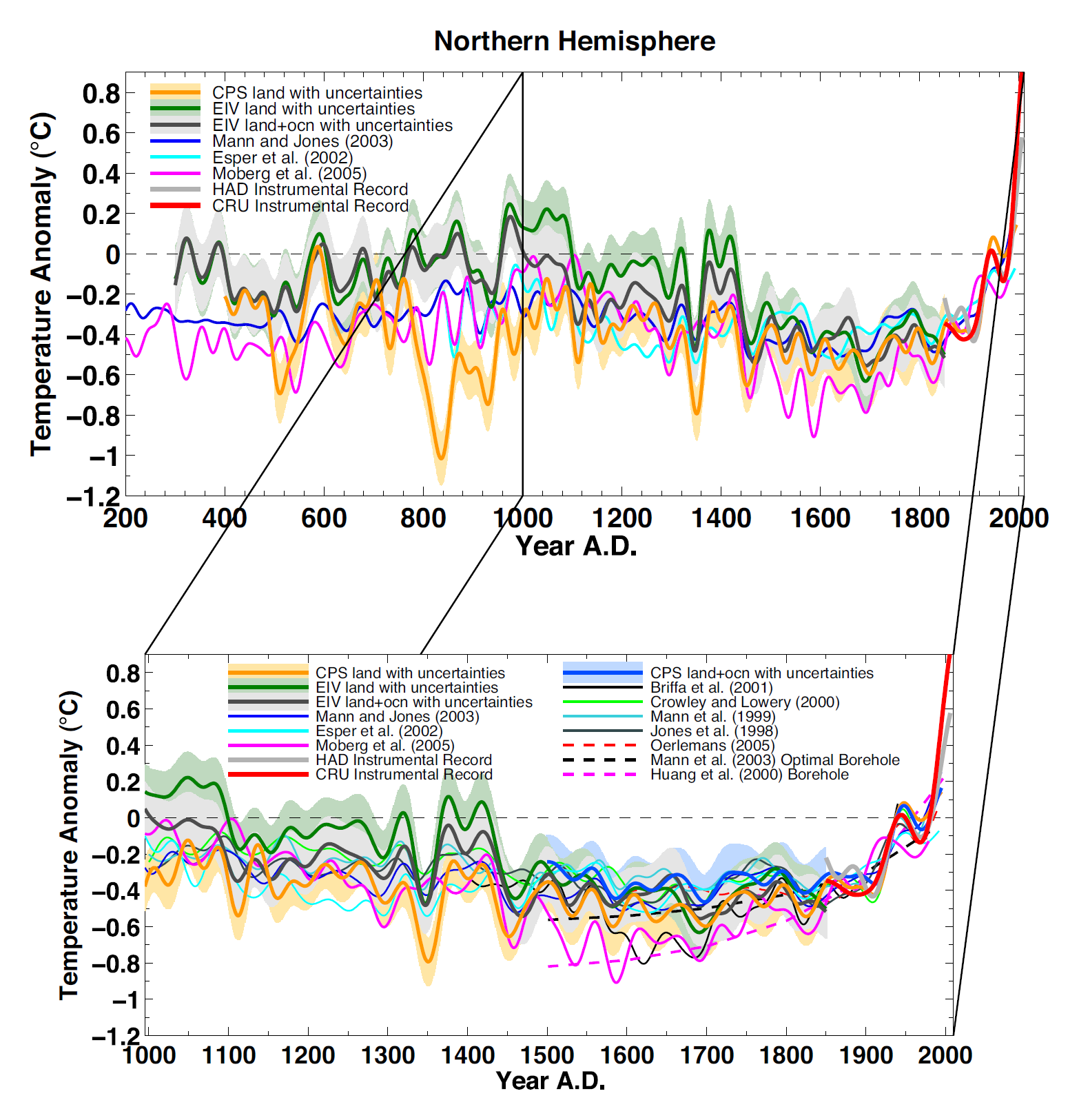 |
PNAS 2008 Reconstruction ComparisonComposite CPS and EIV NH land and land plus ocean temperature reconstructions and estimated 95% confidence intervals. Shown for comparison are published NH reconstructions, centered to have the same mean as the overlapping segment of the CRU instrumental NH land surface temperature record 18502006 that, with the exception of the borehole-based reconstructions, have been scaled to have the same decadal variance as the CRU series during the overlap interval (alternative scaling approaches for attempting to match the amplitude of signal in the reconstructed and instrumental series are examined in SI Text). All series have been smoothed with a 40-year low-pass filter as in ref 33. Confidence intervals have been reduced to account for smoothing. |
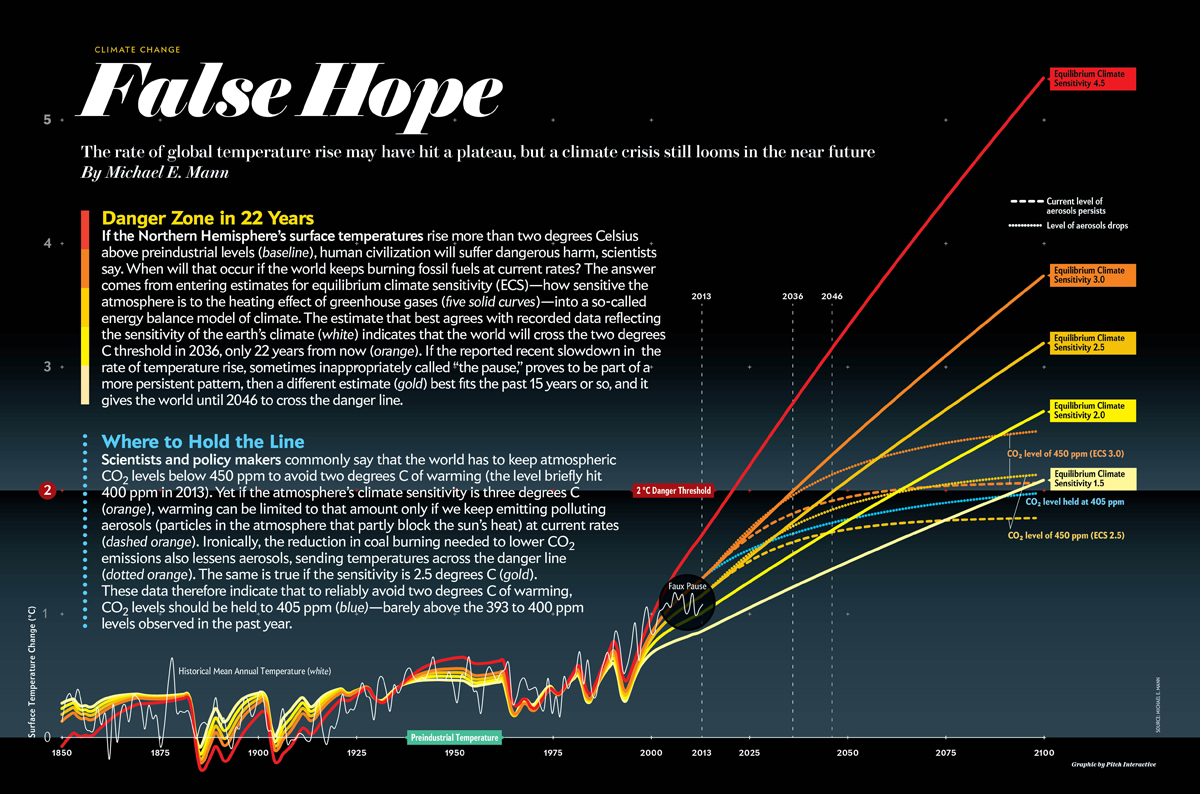 |
False Hope: Earth Will Cross the Climate Danger Threshold by 2036Results from a simple energy balance model show the time to reach a critical warming threshold given different estimates of climate sensitivity. Results from scenarios were emissions of greenhouse gases are reduced are also shown Read the article >> Graphic Credit: Pitch Interactive, Source Credit: Dr. Michael E. Mann |

